Light tank T-50
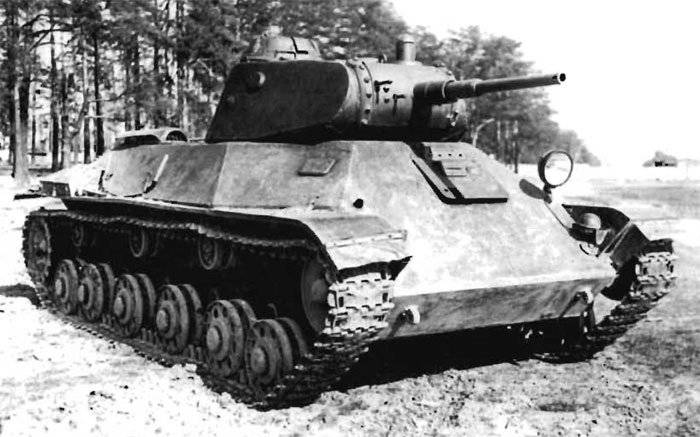
That is why the USSR Defense Committee 7 of August 1938 of the year adopted a resolution “On the Tank Armament System”. This document required by July 1939 of the year (less than a year) to develop new models of tanks that will meet the conditions of the future war in armor, armament and maneuverability. In several KB in accordance with these requirements, they began to develop new tanks.
At the Leningrad Plant of Experimental Machinery No. 185 named after SMKirov, a group of designers headed by S.А. Ginzburg, led the design of a light tank escort infantry. This tank in the summer of the 40 year - the 126 object (in the special literature is often referred to as T-126SP) - was made in metal. The T-126SP was equivalent in its armor protection to the T-34. The hull of the new tank was welded from 45-millimeter armor plates, with the exception of the 20-millimeter sheets of the roof and the bottom. Front, aft and upper hull side sheets were installed at angles from 40 to 57 °.
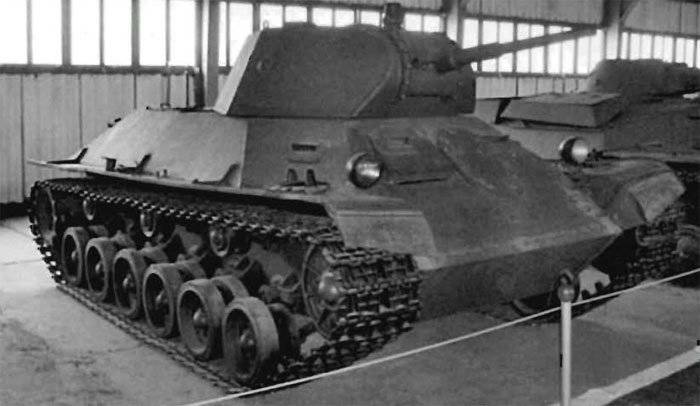
The driver's hatch was located in the upper front plate. A monitoring device was installed in the manhole cover. In the ball mount to the left of the hatch was located machine gun DS-39 caliber 7,62 mm. The fire from a machine gun led gunner-radio operator. His workplace was also equipped with a surveillance device. Another pair of devices was installed in the front zygomatic armor plates.
In a faceted turret welded from individual sheets, an 45-mm 1934 model gun of the year and a DT machine gun of the 7,62 mm caliber, paired with it, were installed. In the roof of the tower was performed a rectangular hatch serving as a landing crew. The stern wall had a round hatch used to dismantle the cannon. In the lid of this hatch and in the walls of the tower there were holes for firing from personal weapons. Holes were closed with pear-shaped plugs. Along the perimeter of the roof of the tower were four observation devices. The commanding panorama was mounted in the manhole cover. Thus, the 126 object visibility significantly surpassed the T-34 tank.
The B-126 engine, which is the 3 cylinder version of the B-6 diesel engine (sometimes called the “half”), was installed on the 2 object. With horsepower 250, he allowed a car weighing 17 tons to reach speeds of up to 35 kilometers per hour. Fuel tanks with a capacity of 340 liters ensured a cruising range of up to 270 kilometers along the highway.
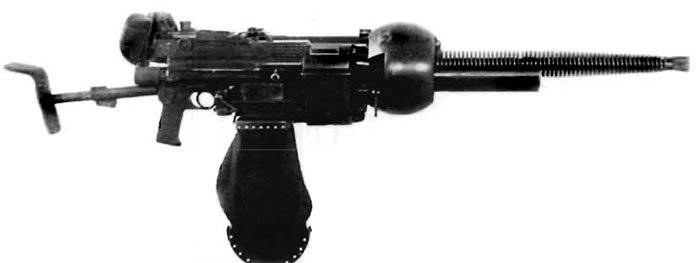
The chassis of the tank (on one side) were: six non-rubber support twin rollers of small diameter, three non-rubber supporting rollers, a rear wheel located behind the wheel, guiding the non-rubber wheel. Basic skating rinks were equipped with internal depreciation. The track chain is open-ended, with an open hinge, for lanterning. A feature of the chassis was a torsion bar suspension.
The radio station 71-TK-3, equipped with a whip antenna, was located in the hull of the tank near the position of the gunner-radio operator. Ammunition of machine guns and cannons consisted of 4250 cartridges and 150 shots (rifle cartridges were used in the DS and DT machine guns).
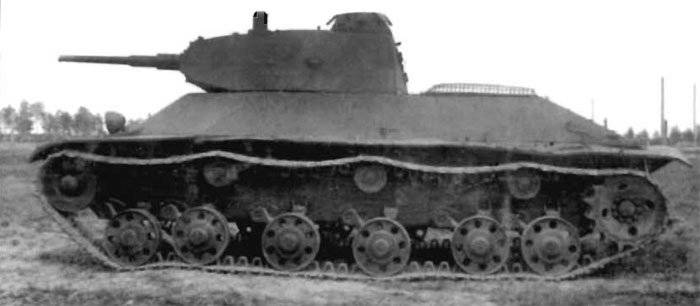
During the factory and military tests that took place in the 1940 year, the tank showed itself well. However, the State Commission proposed to reduce the mass of the tank to 13 tons by reducing the thickness of the armor to 37 millimeters (initially the thickness was 45 mm). In addition, the lack of crew jobs was noted. On the second model of the combat vehicle, this deficiency was tried to be eliminated by removing the DS-39 machine gun, the embrasure of which was closed by the armor cover on the bolts. Steps have also been taken to reduce wear on tracks by replacing non-rubber support rollers with rubber-coated ones. Modified in this way the car in the spec. The literature is often referred to as T-127.
In the autumn of 40, the 126 object was transferred to Leningrad Machine-Building Plant No. KE Voroshilov. There, on its basis, for a month and a half, a group of designers under the leadership of L.S. Troyanova and I.S. Bushneva has developed a new version of the light tank, designated the object 174 (not to be confused with the T-135-34). G.V. Gudkov and S.A. Ginsburg. According to other sources, this machine was developed in parallel with the 85 object, but since it had the best tactical and technical characteristics, preference was given to it. In January, the 126 of the year the tank was made in metal. In February of the same year, after successfully passing the factory and state. The test tank was put into service under the symbol T-41.
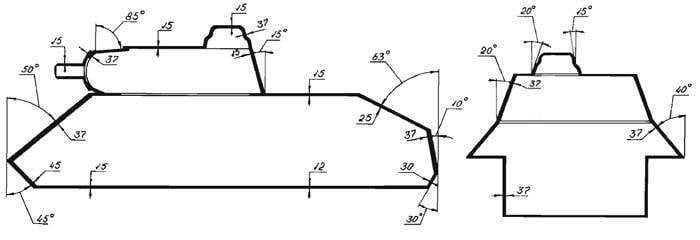
In appearance and design, the T-50 tank was very similar to the 126 object, but it had a number of significant differences, since the creation process took into account the experience of combat use of armored vehicles during the Finnish war and the test results of the German Pz.lll in the USSR in the summer of 40 year The hull sheets of the T-50 tank had a welded joint and large angles of inclination. The maximum thickness of the hull and frontal body armor, as well as the turret armor, was reduced from mm 45 to 37. The stern sheet of the hull had a thickness of 25 millimeters, and the thickness of the bottom and roof was reduced to 15 millimeters. In the upper front plate almost in the center (with a slight shift to the left of the longitudinal axis of the machine) was made the hatch of the driver, equipped with a viewing device; there was no exchange gun. Another pair of surveillance devices, as in the "126-m", mounted in the frontal cheekbones.
The welded tower, which has a streamlined shape, resembled the T-34 tower, but was designed for three crew members. At the rear of the tower’s roof (influenced by Pz.lll), a commander’s turret and eight observation slots, closed by armored valves, were installed. The turret had a small hatch, which probably served as an alarm. The landing of the crew members was carried out through two rectangular hatches made in the roof. For the dismantling of the gun served as a door, made in the feed sheet. The sides of the tower housed loader and gunner observation devices, which were covered with round armored covers.
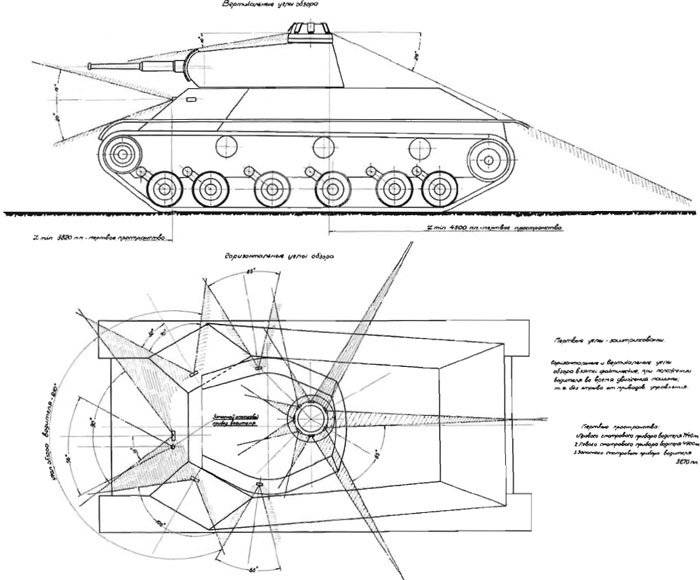
The armament of the T-50 was not typical of Soviet-made tanks. Two 45 caliber DT machine guns were paired with a 7,62-mm cannon. The 9P radio station was installed near the commander’s place in the tank turret.
By reducing the thickness of the armor plates, introducing the principles of differentiated booking, which reduced the weight of the tank to 13,8 tons, and installing the B-4 engine, which has horsepower 300 (forced diesel version B-3), the speed increased significantly - to 52 km / h (maximum object speed 126 - 35 km / h). Two fuel tanks with a total capacity of 350 liters ensured a cruising range of up to 344 km along the highway.
In the chassis used road wheels with internal depreciation and individual torsion bar suspension.
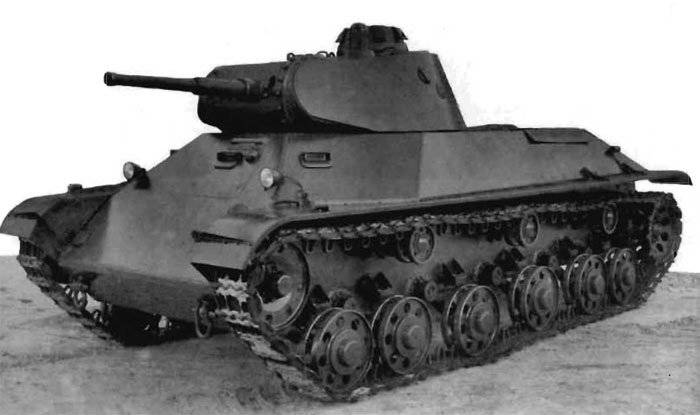
Serial production of the T-50 was planned to start at the plant number 174, in connection with which 1 January 41 of the year it stopped the production of the T-26 tank. But the restructuring of production under the technologically more complex T-50 was carried out slowly, therefore, in the first half of 41, the plant produced only 116 flame-throwing tanks OT-133. Significant difficulties arose with the development of the production of diesel B-4 at the plant number 75 (Kharkov). But according to the plans T-50 was to replace the troops in T-26. According to the original plan for the rearmament of the armored troops troops, this tank was supposed to be the most massive (it should be noted that the first order for T-34 tanks was only 600 units.) In 40 — 41, this plan was adjusted as the decision was made to form mechanized corps . However, for them it was necessary to not less than 14 thousand data tanks. The fact that the T-50 tank was considered as a component of the national tank fleet can be judged by a joint decree of the SNK of the USSR and the Central Committee of the CPSU (b) "On increasing the output of KB, T-34 and T-50 tanks, artillery tractors and tank diesel engines III and IV quarters of 1941, ”which was adopted on 25 on June 1941 of the year after the meeting of the Political Bureau of the Central Committee.
In 1941, with incredible effort, 50 tanks were launched. Plant number 174 was evacuated in August - the main part to Omsk, where the production of tanks was resumed in December, as well as to Barnaul and Nizhny Tagil. An attempt to expand the production of T-50 tanks in Moscow at plant No. 37 did not succeed - they barely coped with the production of 5-tonne T-40, and the 14-tonne T-50 plant was clearly “not too tough”. However, the main restraining factor of production T-50 was the engine.In the planned tasks, the priority was the production of diesel B-2. In particular, on the evacuated plant in Chelyabinsk No. 75, the exported B-4 was disassembled into components for the B-2 engines. decided to build in Barnaul two head Yes: one for the production of T-13, the second for the manufacture of B-1941 engines for them, but in accordance with the order of 50, the T-bills of February, 4, the production of T-6 tanks and engines for them was stopped altogether. year, firing 1942 tanks (probably were collected from the evacuated backlog), began production of the tank T-50.
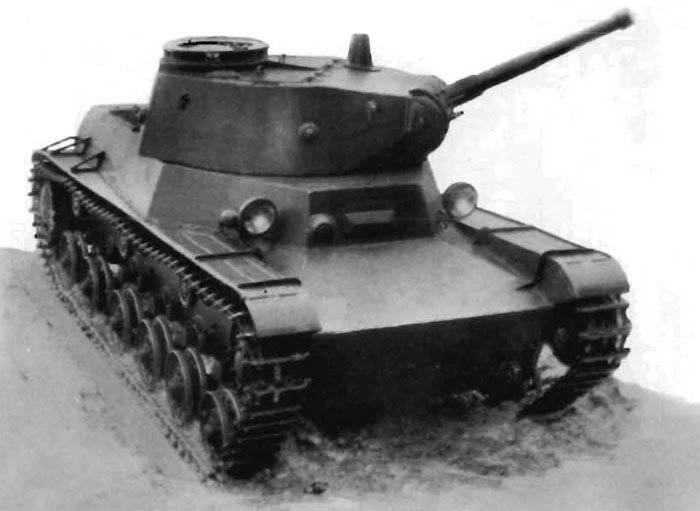
Information about the military fate of the T-50 is very small. But despite this, it is known that in the First Tank Division, which was stationed in the Leningrad Military District and took part in hostilities in the Kingisepp region, in August 41 of the year had 10 T-50. In the autumn of 1941, several T-50s were part of the forces of the Seventh Army, which took part in the defense of the Petrozavodsk sector. During these battles, one car was captured by the Finns and exploited until the end of 54. As for the Soviet army, for example, one T-50 as early as 1943 was listed as part of the Fifth Guards Tank Brigade.
There is no reliable information about how the Fifty "showed themselves in battles. However, there is no doubt that of the three Soviet tanks that were put into service before the Second World War, the T-50 tank was the most thoroughly constructive and balanced optimal in terms of operational and combat qualities, in terms of mobility, armor and armament, it exceeded or was not inferior to the German medium tank Pz.lll, but at the same time it had much smaller dimensions and combat mass. In the turret of the T-50 tank, which had the same u T-34, dia In the light of the meter, three people were placed, which ensured the separation of functions. However, in this case the shortcomings were a continuation of the merits. Despite the fact that the 45-millimeter cannon was located in the tower, the three crew members were crowded. to the starboard side, and the commander himself had to sit to the axis of the tank in a half-turn.It probably made sense to use a two-seat tower, which has a large number of observation devices, as was done in the 126 object. For light tanks, this is acceptable. Virtually all foreign counterparts of the Second World War — Valentine, Stuart, and Chaffee — created in 44 — were equipped with twin towers.
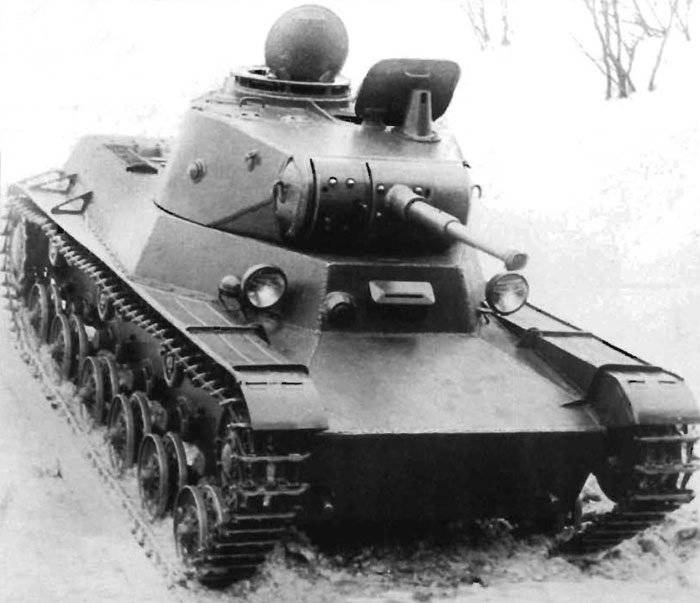
The armament of the T-41 tank was quite sufficient for the 42 and even the 50: the 45K 20K X-gun at the 500 meters distance successfully fought all types of German tanks. This tool was well known to the tank crews, and in warehouses there was a significant amount of shells to it. For 1943, the 20K gun was already rather weak, however, it was at this time that OKN No. 172 was created, tested and recommended for use with the 45 mm BT-42 tank gun. The barrel length of the new weapon was 68,6 caliber, and the initial velocity of the armor-piercing projectile was 950 meters per second. From the gun BT-42 from 20K differed dense layout, allowing to place it even in a single tower T-70. With the installation of this tool on the T-50 there should have been no problems. The BT-42 projectile, at a distance of 500 meters, pierced the frontal armor of almost all German tanks, with the exception of pz.iv Ausf.H and J, Tiger and Panthers.
There was a reserve for the modernization of the tank, including to enhance the body armor, as well as high power density, equal - 21,4 hp / t! For comparison: in the T-34, this indicator was 18,65 hp / t; “Valentine” - 10; “Stewart” - 19,6; Pz.lll— 15. The three-hundred diesel engine could “pull” 45-mm armor.
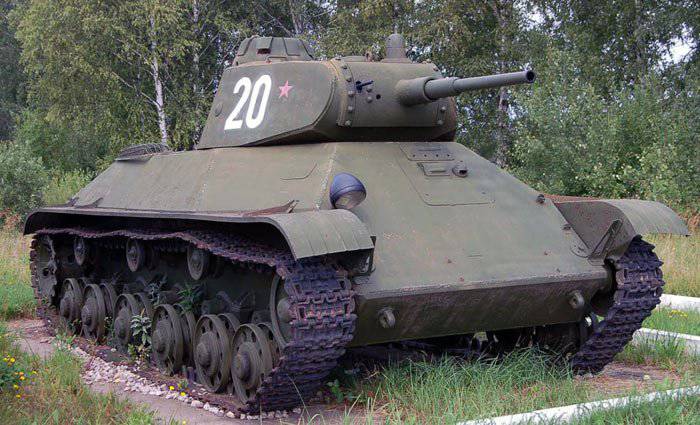
Summing up, we can only regret that the mass production of the T-50 tank was not adjusted.
It should be noted that in the 41 year, a prototype of a flamethrower was installed at the plant No. 174 on the T-50, which used a Degtyarev design shutter. Subsequently, he received the brand ATO-41 and was installed on the KV-8 and OT-34 tanks. At the same time, the Savin tower, equipped with an 37-millimeter anti-aircraft gun, was installed on a tank in an experimental manner.
The story of the T-50 tank would be incomplete without mentioning another sample. In 1941, the Leningrad Kirov Plant within those. requirements for the T-50 developed under the guidance of designer A.S. Ermolaeva and created an object 211. The welded body of the machine had a narrowed nose, equipped with a “brand” for the Kirov factory hatch for the driver. The tank was installed welded turret, having a streamlined elongated shape. The power plant and weapons were identical to the T-50 plant number 174. This option It was lighter than the Voroshilov T-50, but did not have significant advantages. In addition, the hull form of the "Kirov" tank was less successful. With the beginning of the war at the Kirov factory, work on the 211 object was stopped, and the only sample of the tank participated in the defense of Leningrad.
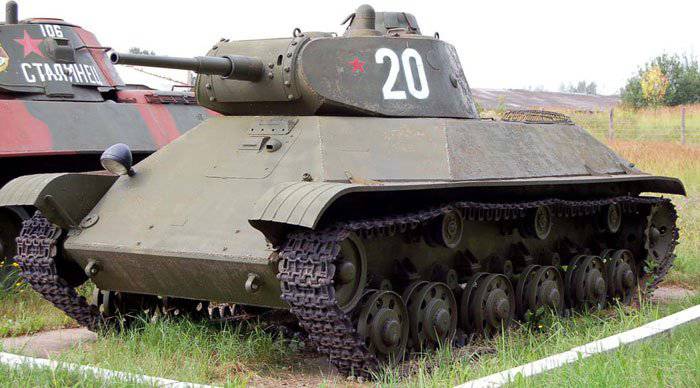
Currently, there are three light tanks T-50: in the Moscow Region Kubinka in the Museum of armored weapons and equipment you can see the tank T-50 and the object 126; one more tank equipped with additional armored screens is located in Finland in the city of Parola in the tank museum.
Information